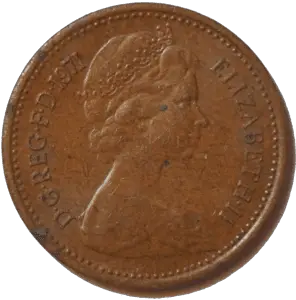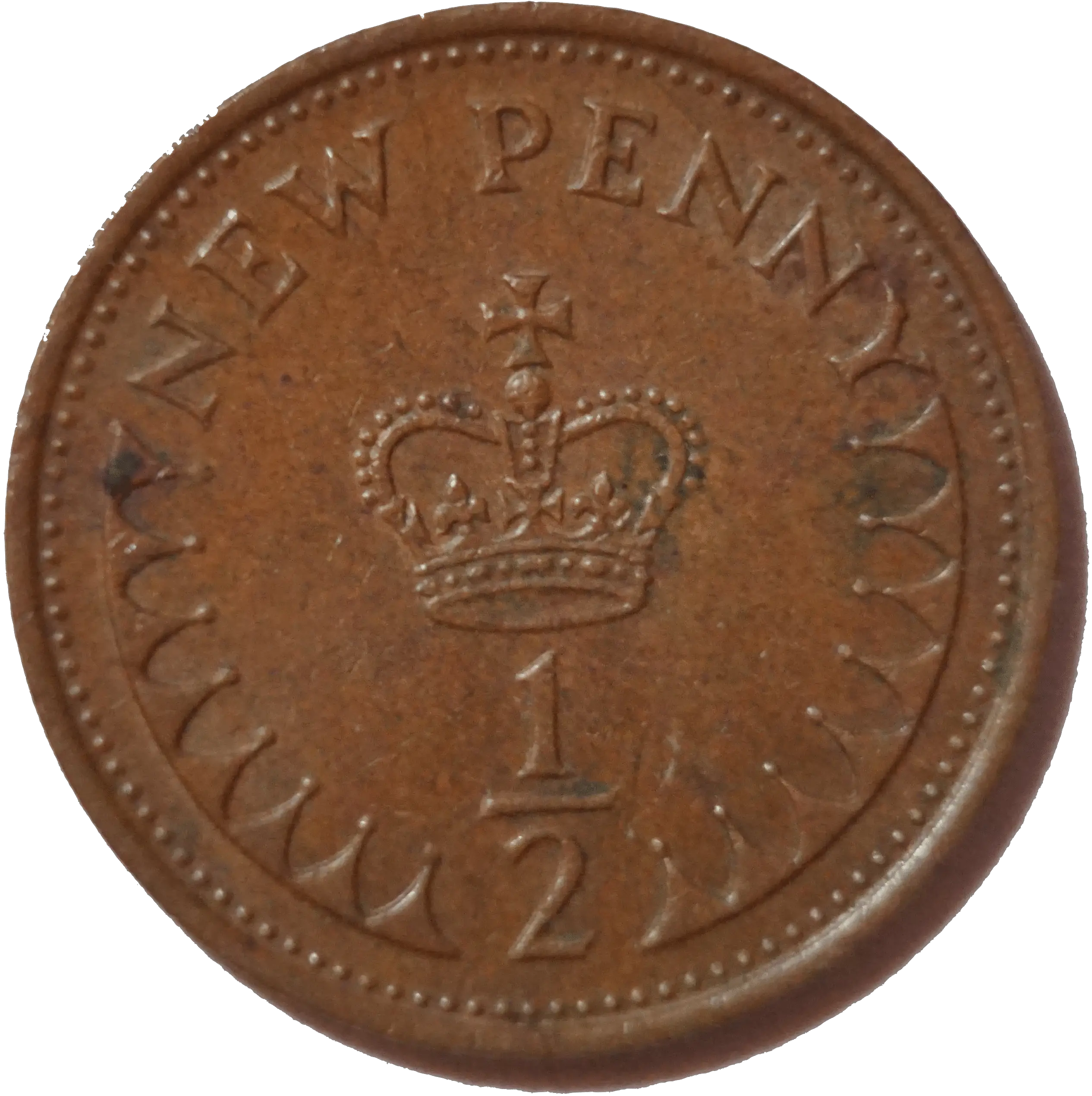The decimal halfpenny was introduced during the decimalisation of currency in the United Kingdom and Ireland.
It followed the pre-decimal halfpenny, which ceased to be legal tender in 1969. The pre-decimal halfpenny had a value of half of a penny or 1/480 of a pound sterling – as before decimalisation, there were 240 pence in a pound – which was then altered to simply half a penny under the decimal system with the introduction of the new halfpenny.
Read below to learn more about the decimal halfpenny.
When was the decimal halfpenny introduced and how long was it circulated?
The decimal halfpenny was introduced in February 1971 during the Decimal Day of the United Kingdom and Ireland with the inscription ‘NEW PENNY’, to indicate that it was a new decimal coin. The decimal halfpenny was legal tender up to 20 pence. A fun fact to note is that with the introduction of the decimal halfpenny, it was suitable to keep the sixpence coin in circulation as its new value was 2 and a half pence.
The introduction of the decimal halfpenny was intended to make smaller transactions easier to translate to the new decimal system, and it was circulated until 1984 at which point pressure from the general population meant that it was no longer a viable coin. This pressure came from the fact that it was such a small denomination, meaning it had become useless for many transactions. On top of this, the coin itself was very small at a diameter of only 17.14mm and weight 1.78g, meaning it was very easy to lose. It was very common for people to avoid picking it up in the streets due to its small value.
The Treasury argued to keep the coin for years, but they could only put up the argument for so long before it was withdrawn from circulation. The Treasury had assumed that withdrawing the halfpenny would cause inflation as retailers would round the prices of products up, but it has since been argued that the impact was negligible compared to macroeconomic factors.
There were plans for a new decimal coin to be introduced with a value of a quarter-penny, in order to allow the pre-decimal threepence to continue in circulation as the halfpenny had allowed for the sixpence to stick around. The quarter-penny was going to be minted from aluminium, but given the backlash, the halfpenny obtained they probably made the right choice to scrap the idea!
What was the design of the decimal halfpenny?
The reverse of the decimal halfpenny featured an image of St Edward’s Crown alongside the inscription ‘NEW PENNY’ at the top, with the value ‘1/2’ towards the bottom. The inscription was changed to ‘HALF PENNY’ between 1982 and 1984 as the coins were no longer considered new, so to speak. The coin was minted from bronze, similarly to the 1p and 2p coins.
The design pays tribute to the St Edward’s Crown, the centrepiece of the Crown Jewels in the Tower of London. The present version of the Crown has been used to crown monarchs ever since George V, who brought back the tradition at the beginning of his reign. The Crown is solid gold and weighs 2.23 kilograms, with 444 precious stones to decorate it.

The obverse design of the coin features the profile of Queen Elizabeth designed by Arnold Machin RA. This design was introduced by Machin in 1968 and continued to be used on British coins until 1984. A similar design by Machin was also selected to use on postage stamps and has been used ever since 1967, becoming possibly the most used image of the Queen to date. It is interesting to know that the Queen is wearing the ‘Girls of Great Britain and Ireland’ Tiara in this design.

How much is a decimal halfpenny worth today?
When looking at how much a halfpenny is worth today, its important to consider how many of them were minted to get an idea as to how scarce they are. The mintage figures from 1971 to 1984 can be found below (source =royalmintmuseum):
- 1971 = 1,394,188,251
- 1972 = proof sets only
- 1973 = 365,680,000
- 1974 = 365,448,000
- 1975 = 197,600,000
- 1976 = 412,172,000
- 1977 = 66,368,000
- 1978 = 59,532,000
- 1979 = 219,132,000
- 1980 = 202,788,000
- 1981 = 46,748,000
- 1982 = 190,752,000
- 1983 = 7,600,000
- 1984 = proof sets only
That’s a whopping 3,528,008,251 coins in total!
Now, we can assume quite a few of these would’ve been simply discarded and thrown away due to their very small dimensions and the general hatred of them by the public, but it is clear to see that there are still a lot of these still around.
We’ve taken a look at eBay to see what the secondary marketplace is looking like for decimal halfpennies and to no surprise, they do not sell for very much at all. We found average values from as low as 2 pence per coin to upwards of 45 pence per coin. The difficulty, however, was finding listings of people actually selling decimal halfpennies and not pre-decimal halfpennies, which seem to be in much greater demand. In fact, we even found many listings for sealed brilliant uncirculated decimal half pennies regularly selling for around 6 pence per coin, further highlighting how little these coins are worth.
There are of course other versions of the coin to consider, such as proof versions or those that are in collectable sets which can sell for a much higher price, but for the sake of simplicity, we have only included regular versions.
